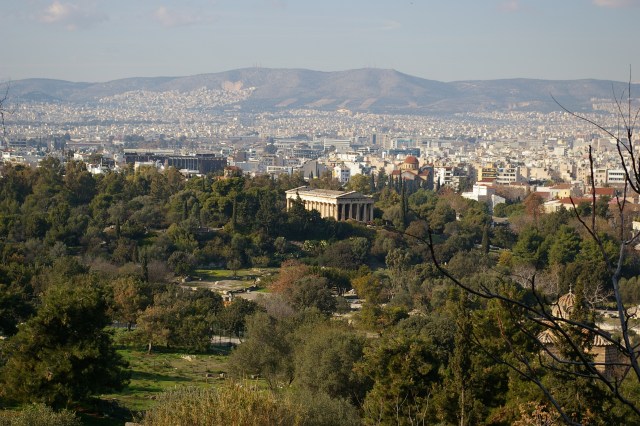Obviously the highlight of any visit to Athens, Greece, probably starts with the Acropolis, but there is so much more to see in this wonderful city. For us, our second favorite location was the Ancient Agora of Athens with the Temple of Hephaestus. The agora was a gathering place for the people of ancient Greece and contains many different structures. It is truly a fascinating place to walk and imagine yourself discussing philosophy or the benefits of a democratic society. When you go to the Acropolis, you can buy a bundled ticket that includes other attractions, including the agora, which makes it well worth the extra money as it will save you money in the long run.




The Temple of Hephaestus, which sits high upon a hill looking over the agora, is one of the best preserved ancient temples in all of Greece. One of the reasons that it is so well preserved is that it had been in continual use for more than two thousand years, even serving as a Greek Orthodox church until the early 1800’s. Hephaestus was the god of metal working, craftsmanship, and fire, perhaps a fitting choice for it to have remained in almost its original condition.




There are so many fascinating ruins to see as you walk through the agora including several statues such as the remaining torso of a statue of Roman Emperor Hadrian. The ancient roads can still be detected as you walk among the ancient ruins. There is also the Museum of the Agora on the grounds, which displays some interesting pieces that have been unearthed during the excavation of the site.




Some people may feel that they have had their fill of ancient ruins and temples after visiting the Acropolis, but we feel that it is well worth taking the time to visit the other sights that Athens has to offer. At least during our visit, there were less tourists at places like the agora and it made walking among those ruins that much more enjoyable. We found the Ancient Agora of Athens to be an almost magical place with so much history and so many artifacts that it can a little overwhelming.






































